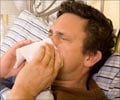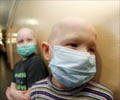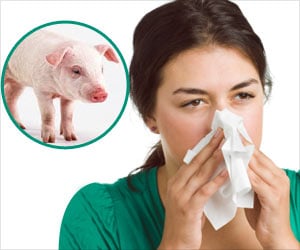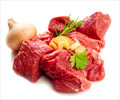More people in Britain died after contracting swine flu last winter, with most deaths among young and middle-aged adults, than during the pandemic a year earlier, official figures showed on Wednesday.

Where information was available on the strain of the infection, more than 90 percent of the deaths -- 535 out of 582 -- were associated with A(H1N1) swine flu, the agency said in its annual flu report.
The figures for last winter compare to 474 deaths reported between June 2009 and April last year as being associated with A(H1N1).
The agency said that 70 percent of fatal cases last winter were in people aged 15 to 64. In past years, seasonal flu has predominantly affected the elderly.
"Traditionally the elderly have been more seriously affected by winter flu but the picture is beginning to change as we are now seeing a higher proportion of young and middle-aged people taken seriously ill," said the HPA's Professor John Watson.
In winter 2010, almost 70 percent of all those who died were in a clinical "at risk" group, which means they would have been eligible for vaccination against influenza.
Advertisement
The agency said it was "concerned" at the low levels of take-up among "at risk" groups. In England only 50 percent of adults under 65 and at risk last season received the vaccine.
However only 37 percent of healthy pregnant women in England had the vaccine.
Professor Watson added: "We are very concerned that only half of adults eligible for the jab last winter took up the offer of vaccination, and particularly that just over a third of healthy pregnant women received it.
"For the majority of people with these conditions, flu is a preventable illness and ahead of the next flu season, a concerted effort must be made by healthcare professionals -- including GPs and midwifes -- to encourage those at risk to take up the offer vaccination. It is the best way to protect against flu."
Health Secretary Andrew Lansley will later unveil a seasonal flu plan including measures to improve vaccine uptake by at-risk groups, the Department of Health said.
The plans include a reserve of flu vaccine to prevent the shortages seen in some surgeries last season.
?Flu can be serious and sadly it can kill," Lansley said. "That?s why I want to protect as many people as possible ? particularly those in at risk groups ? by encouraging them to be vaccinated.
"Vaccination saves lives and that is why I would like to see us meet the WHO recommendation that 75 percent of people in at-risk groups are being vaccinated by 2014.?
A(H1N1) swine flu killed at least 18,449 people and affected some 214 countries and territories after it was uncovered in Mexico and the United States in April 2009.
The quick spread of the infectious new strain worldwide prompted the UN health agency to declare a pandemic on June 11, 2009 until August 10, 2010.
But the response was marred by doubts about the severity of the virus.
Source-AFP













